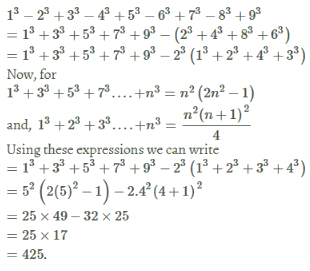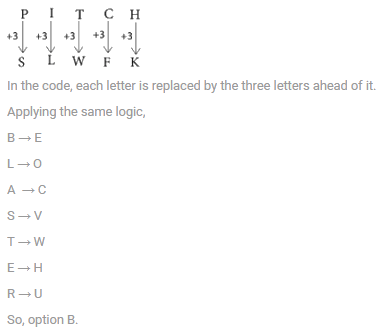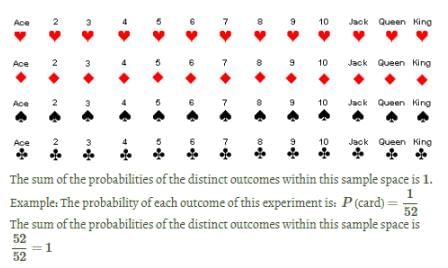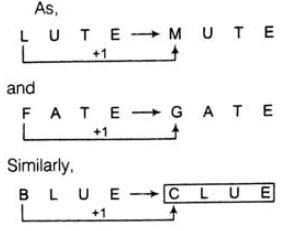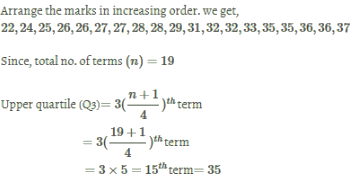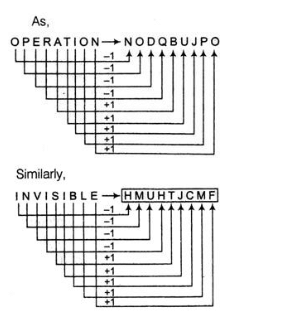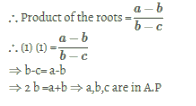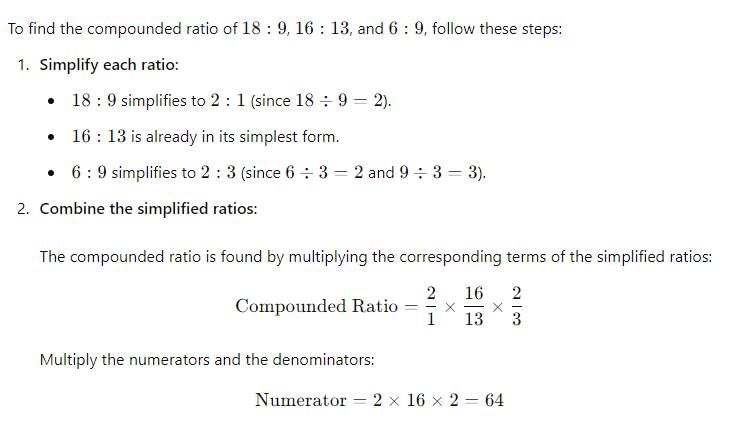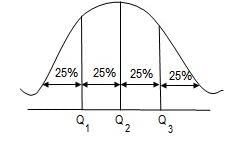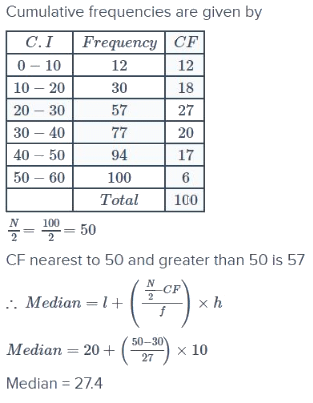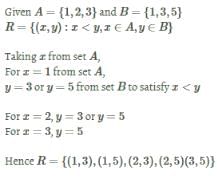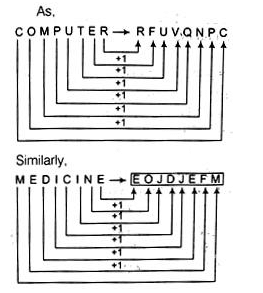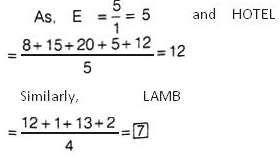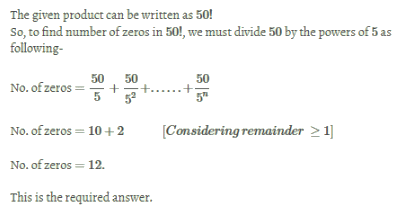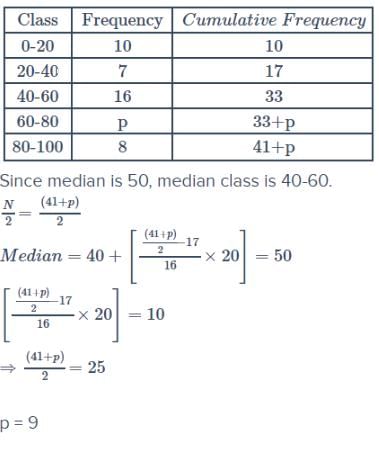All Exams >
CA Foundation >
Mock Tests & Past Year Papers for CA Foundation >
All Questions
All questions of Quantitative Aptitude Mock Tests for CA Foundation Exam
The mean of five numbers is 30. If one number is excluded, their mean becomes 28. What is the excluded number?
- a)38
- b)35
- c)33
- d)36
Correct answer is option 'A'. Can you explain this answer?
The mean of five numbers is 30. If one number is excluded, their mean becomes 28. What is the excluded number?
a)
38
b)
35
c)
33
d)
36

|
Srsps answered |
- Calculate the total sum of the five numbers:The mean of five numbers is 30. So, the total sum S of these five numbers is:S=mean×number of items=30×5=15
- Calculate the total sum of the remaining four numbers:When one number is excluded, the mean of the remaining four numbers is 28. So, the total sum S′ of these four numbers is:S′=mean×number of items=28×4=112
- Find the excluded number:The excluded number xxx is the difference between the total sum of the five numbers and the total sum of the four remaining numbers:x=S−S′=150−112=38
So, the excluded number is 38.
Thus, the correct answer is:
1. 38
Ramu walks 5kms starting from her house towards west then turns right and walks 3km. Thereafter she takes left turn and walks 2km. Further, she turn left and walks 3km. Finally, she turns right and walks 3kms. in what direction she is now from her house?- a)West
- b)North
- c)South
- d)East
Correct answer is option 'A'. Can you explain this answer?
Ramu walks 5kms starting from her house towards west then turns right and walks 3km. Thereafter she takes left turn and walks 2km. Further, she turn left and walks 3km. Finally, she turns right and walks 3kms. in what direction she is now from her house?
a)
West
b)
North
c)
South
d)
East
|
|
Nikita Singh answered |
It's clear from the diagram Ramu is West of his house
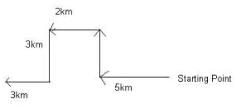

Spot the odd one out.- a)Spinach
- b)Potato
- c)Carrot
- d)Ginger
Correct answer is option 'A'. Can you explain this answer?
Spot the odd one out.
a)
Spinach
b)
Potato
c)
Carrot
d)
Ginger
All others are underground vegetables.
Pointing towards a boy, Veena said 'He is the son of the only son of my paternal grandfather'. How is that boy related to Veena?- a)Uncle
- b)Brother
- c)Cousin
- d)Data inadequate
Correct answer is option 'B'. Can you explain this answer?
Pointing towards a boy, Veena said 'He is the son of the only son of my paternal grandfather'. How is that boy related to Veena?
a)
Uncle
b)
Brother
c)
Cousin
d)
Data inadequate

|
Sonal Patel answered |
Only son of Veena's grandfather is her father. And son of her father is her brother.
Hence, that boy is Veena's brother.
Hence, that boy is Veena's brother.
If log10(x+5)=1, then value of x is equal to- a)3
- b)4
- c)5
- d)6
Correct answer is option 'C'. Can you explain this answer?
If log10(x+5)=1, then value of x is equal to
a)
3
b)
4
c)
5
d)
6

|
Freedom Institute answered |
In exponent form
(x+5)=101
∴x=10−5=5
(x+5)=101
∴x=10−5=5
There are 30 students in a class. The average age of the first 10 students is 12.5 years. The average age of the remaining 20 students is 13.1 years. What is the average age (in years) of the students of the whole class?- a)18 years
- b)12.9 years
- c)14.2 years
- d)17 years
Correct answer is option 'B'. Can you explain this answer?
There are 30 students in a class. The average age of the first 10 students is 12.5 years. The average age of the remaining 20 students is 13.1 years. What is the average age (in years) of the students of the whole class?
a)
18 years
b)
12.9 years
c)
14.2 years
d)
17 years
|
|
Nikita Singh answered |

What is the reciprocal ratio of 81:121?- a)8:12
- b)11:9
- c)9:11
- d)121:81
Correct answer is option 'D'. Can you explain this answer?
What is the reciprocal ratio of 81:121?
a)
8:12
b)
11:9
c)
9:11
d)
121:81

|
Meera Basak answered |
The reciprocal ratio of a:ba:b is b:ab:a
∴ reciprocal ratio of 81:121 is 121:81.
∴ reciprocal ratio of 81:121 is 121:81.
If α,β,γ are three consecutive integers. If these integers are raised to first, second and third positive powers respectively, and added then they form a perfect square, the square root of which is equal to the sum of these integers. Also, α<β<γ. Then, γ is equals to:- a)3
- b)14
- c)5
- d)11
Correct answer is option 'C'. Can you explain this answer?
If α,β,γ are three consecutive integers. If these integers are raised to first, second and third positive powers respectively, and added then they form a perfect square, the square root of which is equal to the sum of these integers. Also, α<β<γ. Then, γ is equals to:
a)
3
b)
14
c)
5
d)
11
|
|
Poonam Reddy answered |
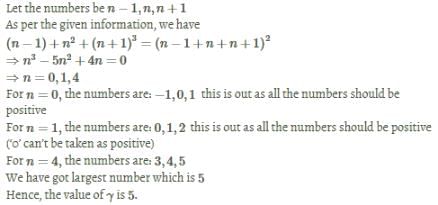
Which of the following is/are not the methods of collection of primary data.- a)Observation Method
- b)Interview Method
- c)Questionnaire Method
- d)Alternative Method
Correct answer is option 'D'. Can you explain this answer?
Which of the following is/are not the methods of collection of primary data.
a)
Observation Method
b)
Interview Method
c)
Questionnaire Method
d)
Alternative Method

|
Freedom Institute answered |
There are various methods for the collection of primary data mainly in surveys and descriptive researches.
The observation, interview and questionnaire methods, we collect the primary data.
The observation, interview and questionnaire methods, we collect the primary data.
If the points of inflexion of a normal curve are 40 and 60 respectively, then its mean deviation is - a)50
- b)45
- c)40
- d)60
Correct answer is option 'A'. Can you explain this answer?
If the points of inflexion of a normal curve are 40 and 60 respectively, then its mean deviation is
a)
50
b)
45
c)
40
d)
60

|
Shanaya Deshpande answered |
Points of inflexion of a normal curve = Mean ± Standard Deviation
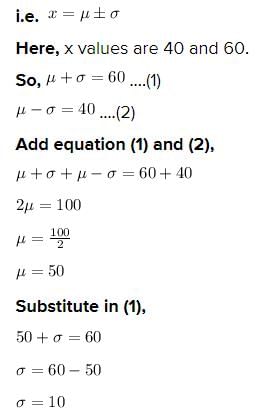
Therefore, The mean is 50 and the standard deviation is 10.
If the angles of a triangle are in the ratio 2 : 7 : 11, then their respective degree measures are- a)20°,70°,90°
- b)30°,70°,80°
- c)18°,63°,99°
- d)None of these
Correct answer is option 'C'. Can you explain this answer?
If the angles of a triangle are in the ratio 2 : 7 : 11, then their respective degree measures are
a)
20°,70°,90°
b)
30°,70°,80°
c)
18°,63°,99°
d)
None of these
|
|
Nikita Singh answered |
Let in ΔPQR,m∠P:m∠Q=m∠R =2:7:11 let x be the common multiple
∴m∠P=2x°,m∠Q=7x°,m∠R=11x°⇒m∠P+m∠Q+m∠R=180° ⇒2x°+7x°+11x°=180° ⇒20x°=180° ⇒x°=9°
∴m∠P=2×9=18°⇒m∠Q=7×9=63° ⇒m∠R=11×9=99°
∴ Required measures of angles are 18°,63°,99°
∴m∠P=2x°,m∠Q=7x°,m∠R=11x°⇒m∠P+m∠Q+m∠R=180° ⇒2x°+7x°+11x°=180° ⇒20x°=180° ⇒x°=9°
∴m∠P=2×9=18°⇒m∠Q=7×9=63° ⇒m∠R=11×9=99°
∴ Required measures of angles are 18°,63°,99°
Candidate appearing at the F.Y.commerce Examination can offer English at either the higher level or at the lower level. They have to offer Elements of Government or Mathematics as an option subject. Out of 1000 candidate from college A, 50% have offered English at the higher level, 80% of the candidate with English at the lower level have offered Mathematics while the different between number of candidate offering Mathematics and offering Elements of Government in the entire college is 600. In college B from, from which 1500 candidates have appeared equal numbers, have offered elements of Government and Mathematics. The number of candidate with the combination English at the higher level and Mathematics is 200 which are 25% of the number offering English at the lower level.Q. Find the number of students opting for English higher level and elements of governments.- a)501
- b)450
- c)510
- d)500
Correct answer is option 'D'. Can you explain this answer?
Candidate appearing at the F.Y.commerce Examination can offer English at either the higher level or at the lower level. They have to offer Elements of Government or Mathematics as an option subject. Out of 1000 candidate from college A, 50% have offered English at the higher level, 80% of the candidate with English at the lower level have offered Mathematics while the different between number of candidate offering Mathematics and offering Elements of Government in the entire college is 600. In college B from, from which 1500 candidates have appeared equal numbers, have offered elements of Government and Mathematics. The number of candidate with the combination English at the higher level and Mathematics is 200 which are 25% of the number offering English at the lower level.
Q. Find the number of students opting for English higher level and elements of governments.
a)
501
b)
450
c)
510
d)
500

|
Siddharth Sen answered |
Total No. of candidates = 1000
and 50 % has opted English at higher level
Therefore, No. of students for English
= 1000 - 50 % of 1000
= 500.
and 50 % has opted English at higher level
Therefore, No. of students for English
= 1000 - 50 % of 1000
= 500.
In how many ways can we select 5 people from a group of 9 people so that a particular person is never to be included- a)8C5
- b)9C5
- c)8P5
- d)9P5
Correct answer is option 'A'. Can you explain this answer?
In how many ways can we select 5 people from a group of 9 people so that a particular person is never to be included
a)
8C5
b)
9C5
c)
8P5
d)
9P5

|
Malavika Basak answered |
Out of 9 people, one has not to be selected.
Therefore, there are total 8 persons. We have to select 5 among them.
Total number of ways = 8C5
Therefore, there are total 8 persons. We have to select 5 among them.
Total number of ways = 8C5
The sale of salesman in a week are given below in the pie diagram. Study the diagram and answer the following questions, if the total sale due to salesman A is Rs. 18,000.Q. The salesman with the highest sale is: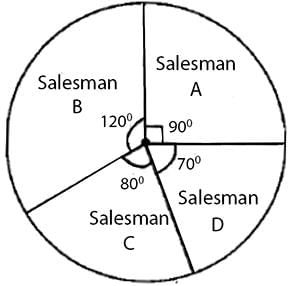
- a)A
- b)B
- c)C
- d)D
Correct answer is option 'B'. Can you explain this answer?
The sale of salesman in a week are given below in the pie diagram. Study the diagram and answer the following questions, if the total sale due to salesman A is Rs. 18,000.
Q. The salesman with the highest sale is:

a)
A
b)
B
c)
C
d)
D
|
|
Nikita Singh answered |
In a given pie chart, Salesman B has the greatest angle i.e. 120° when compared to other salesmen.
Also, we know that in a circle, greater the angle of an arc, greater the area.
∴ Salesman B has the highest sale.
Also, we know that in a circle, greater the angle of an arc, greater the area.
∴ Salesman B has the highest sale.
The post office is to the east of the school while my house is to the south of the school. The market is to the north of the post office. If the distance of the market from the post office is equal to the distance of my house from the school, then in which direction is the market with respect to my school?- a)North
- b)East
- c)North- East
- d)South- West
Correct answer is option 'C'. Can you explain this answer?
The post office is to the east of the school while my house is to the south of the school. The market is to the north of the post office. If the distance of the market from the post office is equal to the distance of my house from the school, then in which direction is the market with respect to my school?
a)
North
b)
East
c)
North- East
d)
South- West

|
Srsps answered |
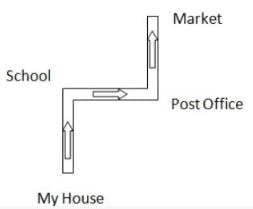
If f(x) = x + tan x and f is inverse of g, then g’(x) is equal to- a)1/1+(g(x)−x)2
- b)1/1−(g(x)−x)2
- c)1/2+(g(x)−x)2
- d)1/2−(g(x)−x)2
Correct answer is option 'C'. Can you explain this answer?
If f(x) = x + tan x and f is inverse of g, then g’(x) is equal to
a)
1/1+(g(x)−x)2
b)
1/1−(g(x)−x)2
c)
1/2+(g(x)−x)2
d)
1/2−(g(x)−x)2

|
Hrishikesh Pillai answered |
Explanation:
Given:
- f(x) = x + tan x
- f is the inverse of g
Key Concept:
- If f is the inverse of g, then f(g(x)) = x and g(f(x)) = x
Steps to Find g'(x):
1. Start by finding g(x) by replacing f(x) with x in the given equation:
g(x) = x + tan x
2. To find g'(x), differentiate g(x) with respect to x:
g'(x) = 1 + sec^2x
3. Now, we need to express g'(x) in terms of g(x), so substitute g(x) = x + tan x back into g'(x):
g'(x) = 1 + sec^2(x) = 1 + 1 + tan^2x = 2 + tan^2x
4. Rewrite tan^2x as (g(x) - x)^2:
g'(x) = 2 + (g(x) - x)^2 = 2 + (g(x) - x)^2
5. Therefore, g'(x) is equal to 1/2 + (g(x) - x)^2, which corresponds to option C.
Given:
- f(x) = x + tan x
- f is the inverse of g
Key Concept:
- If f is the inverse of g, then f(g(x)) = x and g(f(x)) = x
Steps to Find g'(x):
1. Start by finding g(x) by replacing f(x) with x in the given equation:
g(x) = x + tan x
2. To find g'(x), differentiate g(x) with respect to x:
g'(x) = 1 + sec^2x
3. Now, we need to express g'(x) in terms of g(x), so substitute g(x) = x + tan x back into g'(x):
g'(x) = 1 + sec^2(x) = 1 + 1 + tan^2x = 2 + tan^2x
4. Rewrite tan^2x as (g(x) - x)^2:
g'(x) = 2 + (g(x) - x)^2 = 2 + (g(x) - x)^2
5. Therefore, g'(x) is equal to 1/2 + (g(x) - x)^2, which corresponds to option C.
Problem of choice arises when there are _____ .- a)multiple resources having limited uses
- b)limited resources having multiple uses
- c)limited resources having limited uses
- d)multiple resources having multiple uses
Correct answer is option 'B'. Can you explain this answer?
Problem of choice arises when there are _____ .
a)
multiple resources having limited uses
b)
limited resources having multiple uses
c)
limited resources having limited uses
d)
multiple resources having multiple uses
|
|
Supriya Verma answered |
U take example of milk,
many uses of milk like making shweet,tea etc
so limited resources and multiple uses
so,B options correct
many uses of milk like making shweet,tea etc
so limited resources and multiple uses
so,B options correct
Find the roots of the equation (x-5)(x-7)=8 - a)3 ,6
- b)5,7
- c)6,9
- d)3,9
Correct answer is option 'D'. Can you explain this answer?
Find the roots of the equation (x-5)(x-7)=8
a)
3 ,6
b)
5,7
c)
6,9
d)
3,9

|
Sahil Malik answered |
(x-5)(x-7)=8
∴x2-12x+35=8
∴x2-12x+27=0
∴x2-9x-3x+27=0
∴x(x-9)-3(x-9)=0
∴(x-9)(x-3)=0
∴x=9 or x=3
Hence, the roots of the equation are 3 and 9
∴x2-12x+35=8
∴x2-12x+27=0
∴x2-9x-3x+27=0
∴x(x-9)-3(x-9)=0
∴(x-9)(x-3)=0
∴x=9 or x=3
Hence, the roots of the equation are 3 and 9
The class mark of the C.I.'s 10-19, 20-29, 30-39 are- a)15, 25, 35
- b)30, 50, 70
- c)14.5, 24.5, 34.5
- d)None of these
Correct answer is option 'C'. Can you explain this answer?
The class mark of the C.I.'s 10-19, 20-29, 30-39 are
a)
15, 25, 35
b)
30, 50, 70
c)
14.5, 24.5, 34.5
d)
None of these

|
Puja Singh answered |
Class-mark =LCL+UCL/2=10+19/2=14.5 Same for other
class interval so the answer is 14.5,24.5,34.5.
class interval so the answer is 14.5,24.5,34.5.
5, 16, 51, 158, .....?- a)1452
- b)483
- c)481
- d)1454
Correct answer is option 'C'. Can you explain this answer?
5, 16, 51, 158, .....?
a)
1452
b)
483
c)
481
d)
1454

|
Jatin Mehta answered |
16 = 5 X 3 + 1, 51 = 16 X 3 +3 , 158 = 51 X 3 + 5
:. Next term = 158 x 3 + 7 = 481
:. Next term = 158 x 3 + 7 = 481
0, 7, 26, ?, 124, 215- a)51
- b)37
- c)63
- d)16
Correct answer is option 'C'. Can you explain this answer?
0, 7, 26, ?, 124, 215
a)
51
b)
37
c)
63
d)
16
|
|
Poonam Reddy answered |
Clearly the given series is 13-1,23-1,33-1,43-1,53-1,63-1. So, the missing number is 43-1=63.
The third decile for the numbers 15, 10, 20, 25, 18, 11, 9, 12 is- a)13
- b)10.70
- c)11
- d)11.50
Correct answer is option 'B'. Can you explain this answer?
The third decile for the numbers 15, 10, 20, 25, 18, 11, 9, 12 is
a)
13
b)
10.70
c)
11
d)
11.50

|
Tejas Chaudhary answered |
Given data: 15, 10, 20, 25, 18, 11, 9, 12
To find: Third decile
Solution:
Step 1: Arrange the given data in ascending order
9, 10, 11, 12, 15, 18, 20, 25
Step 2: Calculate the total number of values
n = 8
Step 3: Calculate the index of the third decile
Index of third decile = 3/10 × n = 0.3 × 8 = 2.4
Step 4: Round off the index to the nearest integer
Rounding off 2.4 to the nearest integer, we get 2.
Step 5: Find the value corresponding to the rounded off index
The value corresponding to index 2 is 11.
Therefore, the third decile for the given data is 11.
Hence, option (b) 10.70 is incorrect.
To find: Third decile
Solution:
Step 1: Arrange the given data in ascending order
9, 10, 11, 12, 15, 18, 20, 25
Step 2: Calculate the total number of values
n = 8
Step 3: Calculate the index of the third decile
Index of third decile = 3/10 × n = 0.3 × 8 = 2.4
Step 4: Round off the index to the nearest integer
Rounding off 2.4 to the nearest integer, we get 2.
Step 5: Find the value corresponding to the rounded off index
The value corresponding to index 2 is 11.
Therefore, the third decile for the given data is 11.
Hence, option (b) 10.70 is incorrect.
In the following question, there are two words to left of the sign ': :' which are connected in some way. The same relationship is shared by one of the four alternative pair of words given below. Find the correct alternative pair.Q. Soldier : Regiment : : ?- a)Wheels : Bearings
- b)Coil : Motor
- c)Book : Printer
- d)Gas : Nitrogen
Correct answer is option 'B'. Can you explain this answer?
In the following question, there are two words to left of the sign ': :' which are connected in some way. The same relationship is shared by one of the four alternative pair of words given below. Find the correct alternative pair.
Q. Soldier : Regiment : : ?
a)
Wheels : Bearings
b)
Coil : Motor
c)
Book : Printer
d)
Gas : Nitrogen
|
|
Kanwal Preet answered |
Soldiers form part of a Regiment as coil forms a part of motor. This is part and whole relationship.
The annual gathering of a college was organised on a day. Six different programmes - drama , singing , mimicry ,speech , story -telling and dance are to be performed by six student A , B , C , D , E , and F , not necessarily in the same order. the programme begins with a song not sung by B and ends with a dance. C performs mimicry immediately after the speech .E performs drama just before the dance. D or F are not available for the last performance. The speech is not given by A. An interval of 30 minutes is given immediately after mimicry with three more items remaining to be performed . D performs immediately after the interval.Q. Who was the first performer ?- a)D
- b)E
- c)A
- d)Data inadequate
Correct answer is option 'D'. Can you explain this answer?
The annual gathering of a college was organised on a day. Six different programmes - drama , singing , mimicry ,speech , story -telling and dance are to be performed by six student A , B , C , D , E , and F , not necessarily in the same order. the programme begins with a song not sung by B and ends with a dance. C performs mimicry immediately after the speech .E performs drama just before the dance. D or F are not available for the last performance. The speech is not given by A. An interval of 30 minutes is given immediately after mimicry with three more items remaining to be performed . D performs immediately after the interval.
Q. Who was the first performer ?
a)
D
b)
E
c)
A
d)
Data inadequate

|
Srsps answered |
Again could be A or B. Hence, data inadequate. Options (d) is correct.
In the question, there are four options. Three in these options, are alike in certain manner. Only one number does not fit in. Find the one which doesn't fit.
- a)9309
- b)3215
- c)4721
- d)2850
Correct answer is option 'A'. Can you explain this answer?
In the question, there are four options. Three in these options, are alike in certain manner. Only one number does not fit in. Find the one which doesn't fit.
a)
9309
b)
3215
c)
4721
d)
2850

|
Sagarika Pillai answered |
Only in 9309, the digit 9 is repeated whereas in other numbers no digits are repeated.
Hence, 9309 is different amongst all.
Simple interest on Rs.3500 for 3 years at 12% per annum is- a)Rs.1200
- b)Rs.1260
- c)Rs.2260
- d)Rs. 2000
Correct answer is option 'B'. Can you explain this answer?
Simple interest on Rs.3500 for 3 years at 12% per annum is
a)
Rs.1200
b)
Rs.1260
c)
Rs.2260
d)
Rs. 2000

|
Ankita Mukherjee answered |
Given data:
Principal amount (P) = Rs. 3500
Time (t) = 3 years
Rate of interest (R) = 12%
To calculate the simple interest (S.I.), we use the formula:
S.I. = (P x R x t)/100
Substituting the given values in the above formula, we get:
S.I. = (3500 x 12 x 3)/100 = Rs. 1260
Therefore, the simple interest on Rs. 3500 for 3 years at 12% per annum is Rs. 1260. Hence, the correct answer is option 'B'.
Principal amount (P) = Rs. 3500
Time (t) = 3 years
Rate of interest (R) = 12%
To calculate the simple interest (S.I.), we use the formula:
S.I. = (P x R x t)/100
Substituting the given values in the above formula, we get:
S.I. = (3500 x 12 x 3)/100 = Rs. 1260
Therefore, the simple interest on Rs. 3500 for 3 years at 12% per annum is Rs. 1260. Hence, the correct answer is option 'B'.
Neelam, who is Deepak's daughter, says to Deepika, "Your mother Rekha is the younger sister of my father who is the third child of Ramlal." How is Ramlal related to Deepika?- a)Uncle
- b)Father
- c)Grandfather
- d)Father-in-law
Correct answer is option 'C'. Can you explain this answer?
Neelam, who is Deepak's daughter, says to Deepika, "Your mother Rekha is the younger sister of my father who is the third child of Ramlal." How is Ramlal related to Deepika?
a)
Uncle
b)
Father
c)
Grandfather
d)
Father-in-law

|
Disha Joshi answered |
Neelam's father is Deepak.
Deepika's mother is Rekha.
Deepak is the third child of Ramlal.
So, Deepak's younger sister Rekha is the daughter of Ramlal.
So, Ramlal is the father of Rekha and the grandfather of her daughter Deepika.
option C.
Deepika's mother is Rekha.
Deepak is the third child of Ramlal.
So, Deepak's younger sister Rekha is the daughter of Ramlal.
So, Ramlal is the father of Rekha and the grandfather of her daughter Deepika.
option C.
The intersection point of less than ogive and more than ogive gives the ___ of a frequency distribution.- a)Median
- b)Frequency
- c)Cumulative frequency
- d)Mean
Correct answer is option 'A'. Can you explain this answer?
The intersection point of less than ogive and more than ogive gives the ___ of a frequency distribution.
a)
Median
b)
Frequency
c)
Cumulative frequency
d)
Mean

|
Puja Singh answered |
The intersection of less than and more than ogives is the median of the corresponding frequency distribution.
chatter : talk :: flutter : ______- a)dance
- b)wobble
- c)sing
- d)flap
Correct answer is option 'D'. Can you explain this answer?
chatter : talk :: flutter : ______
a)
dance
b)
wobble
c)
sing
d)
flap
|
|
Poonam Reddy answered |
To chatter is to talk rapidly, and to flutter is to flap rapidly.
The ratio of two numbers is 15: 19. If a certain number is added to each term of the ratio it become 8: 9. What is the number added to each of the ratio?
- a)6
- b)15
- c)17
- d)23
Correct answer is option 'C'. Can you explain this answer?
The ratio of two numbers is 15: 19. If a certain number is added to each term of the ratio it become 8: 9. What is the number added to each of the ratio?
a)
6
b)
15
c)
17
d)
23

|
Freedom Institute answered |
Given:
Ratio of two numbers = 15:19
New ratio after adding a certain number = 8:9
To Find:
The number that was added
Solution:
Let the two numbers be 15x and 19x.
Ratio of two numbers = 15:19
New ratio after adding a certain number = 8:9
To Find:
The number that was added
Solution:
Let the two numbers be 15x and 19x.
According to the question, the ratio of the two numbers is 15:19.
Therefore,
we can write the equation:
15x/19x = 15/19
Cross-multiplying,
we get: 15 × 19x = 19 × 15x 285x = 285x
Thus, we get x = 1.
Therefore, the two numbers are 15 and 19.
Let the number that was added be y.
The new ratio of the numbers is 8:9 after adding y.
Therefore, we can write the equation:
(15 + y)/(19 + y) = 8/9
Cross-multiplying,
we get: 9(15 + y) = 8(19 + y)
Simplifying the above equation,
we get: 135 + 9y = 152 + 8y
y = 17
Answer: The number that was added is 17.
Therefore,
we can write the equation:
15x/19x = 15/19
Cross-multiplying,
we get: 15 × 19x = 19 × 15x 285x = 285x
Thus, we get x = 1.
Therefore, the two numbers are 15 and 19.
Let the number that was added be y.
The new ratio of the numbers is 8:9 after adding y.
Therefore, we can write the equation:
(15 + y)/(19 + y) = 8/9
Cross-multiplying,
we get: 9(15 + y) = 8(19 + y)
Simplifying the above equation,
we get: 135 + 9y = 152 + 8y
y = 17
Answer: The number that was added is 17.
For which of the following sets of data is the mode and the median the same?- a)1, 7, 5, 2, 3, 7, 8, 1, 7, 10
- b)1, 6, 5, 3, 9, 2, 2, 3, 4, 2
- c)2, 1, 9, 2, 3, 0, 7, 7, 2, 1
- d)7, 5, 3, 6, 8, 2, 7, 5, 8, 7
Correct answer is option 'C'. Can you explain this answer?
For which of the following sets of data is the mode and the median the same?
a)
1, 7, 5, 2, 3, 7, 8, 1, 7, 10
b)
1, 6, 5, 3, 9, 2, 2, 3, 4, 2
c)
2, 1, 9, 2, 3, 0, 7, 7, 2, 1
d)
7, 5, 3, 6, 8, 2, 7, 5, 8, 7
|
|
Poonam Reddy answered |
Arrange the data in the ascending order.
A) 1, 1, 2, 3, 5, 7, 7, 7, 8, 10
B) 1, 2, 2, 2, 3, 3, 4, 5, 6, 9
C) 0, 1, 1, 2, 2, 2, 3, 7, 7, 9
D) 2, 3, 5, 5, 6, 7, 7, 7, 8, 8
It can be seen that for option C, the median, as well as the mode, is 2.
A) 1, 1, 2, 3, 5, 7, 7, 7, 8, 10
B) 1, 2, 2, 2, 3, 3, 4, 5, 6, 9
C) 0, 1, 1, 2, 2, 2, 3, 7, 7, 9
D) 2, 3, 5, 5, 6, 7, 7, 7, 8, 8
It can be seen that for option C, the median, as well as the mode, is 2.
Chapter doubts & questions for Quantitative Aptitude Mock Tests - Mock Tests & Past Year Papers for CA Foundation 2025 is part of CA Foundation exam preparation. The chapters have been prepared according to the CA Foundation exam syllabus. The Chapter doubts & questions, notes, tests & MCQs are made for CA Foundation 2025 Exam. Find important definitions, questions, notes, meanings, examples, exercises, MCQs and online tests here.
Chapter doubts & questions of Quantitative Aptitude Mock Tests - Mock Tests & Past Year Papers for CA Foundation in English & Hindi are available as part of CA Foundation exam.
Download more important topics, notes, lectures and mock test series for CA Foundation Exam by signing up for free.
Mock Tests & Past Year Papers for CA Foundation
226 docs|19 tests
|

Contact Support
Our team is online on weekdays between 10 AM - 7 PM
Typical reply within 3 hours
|
Free Exam Preparation
at your Fingertips!
Access Free Study Material - Test Series, Structured Courses, Free Videos & Study Notes and Prepare for Your Exam With Ease

 Join the 10M+ students on EduRev
Join the 10M+ students on EduRev
|

|
Create your account for free
OR
Forgot Password
OR
Signup to see your scores
go up
within 7 days!
within 7 days!
Takes less than 10 seconds to signup

